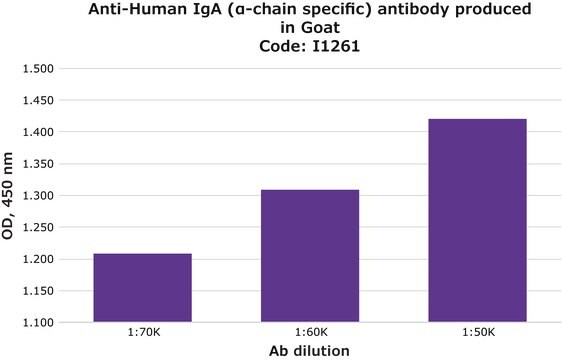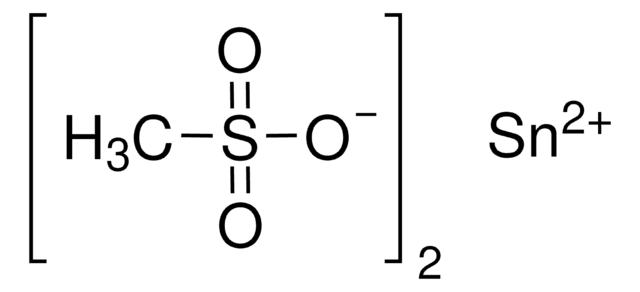M4141
Methanesulfonic acid solution
4 M (with 0.2% (w/v) tryptamine)
Sinonimo/i:
Sulfomethane
About This Item
Prodotti consigliati
Stato
liquid
Livello qualitativo
Concentrazione
4 M (with 0.2% (w/v) tryptamine)
Temperatura di conservazione
2-8°C
Stringa SMILE
CS(O)(=O)=O
InChI
1S/CH4O3S/c1-5(2,3)4/h1H3,(H,2,3,4)
AFVFQIVMOAPDHO-UHFFFAOYSA-N
Cerchi prodotti simili? Visita Guida al confronto tra prodotti
Applicazioni
Confezionamento
Avvertenza
Avvertenze
Danger
Indicazioni di pericolo
Consigli di prudenza
Classi di pericolo
Acute Tox. 4 Oral - Eye Dam. 1 - Met. Corr. 1 - Skin Corr. 1B - Skin Sens. 1 - STOT SE 3
Organi bersaglio
Respiratory system
Codice della classe di stoccaggio
8A - Combustible corrosive hazardous materials
Classe di pericolosità dell'acqua (WGK)
WGK 2
Dispositivi di protezione individuale
Faceshields, Gloves, Goggles, type ABEK (EN14387) respirator filter
Scegli una delle versioni più recenti:
Possiedi già questo prodotto?
I documenti relativi ai prodotti acquistati recentemente sono disponibili nell’Archivio dei documenti.
I clienti hanno visto anche
Il team dei nostri ricercatori vanta grande esperienza in tutte le aree della ricerca quali Life Science, scienza dei materiali, sintesi chimica, cromatografia, discipline analitiche, ecc..
Contatta l'Assistenza Tecnica.







